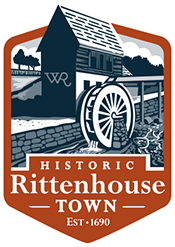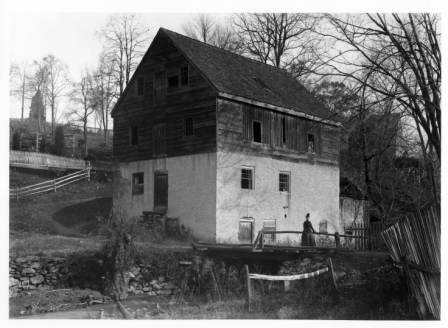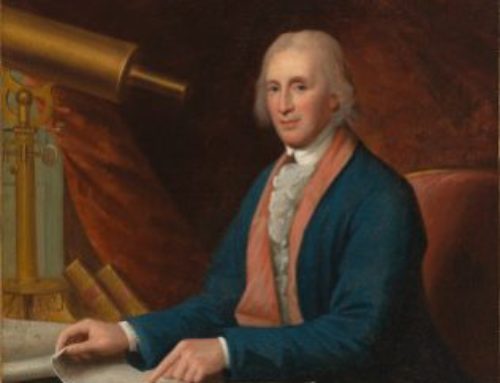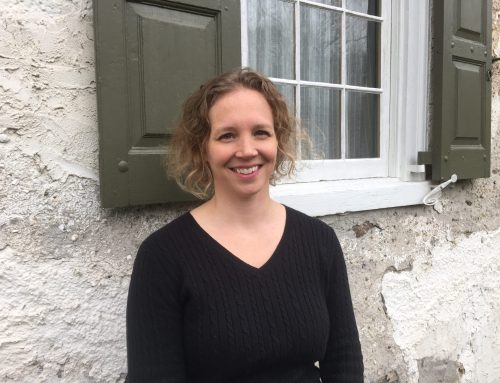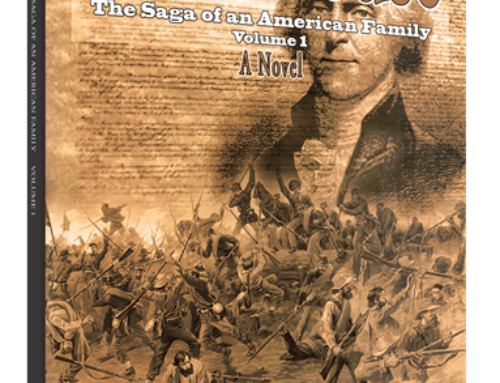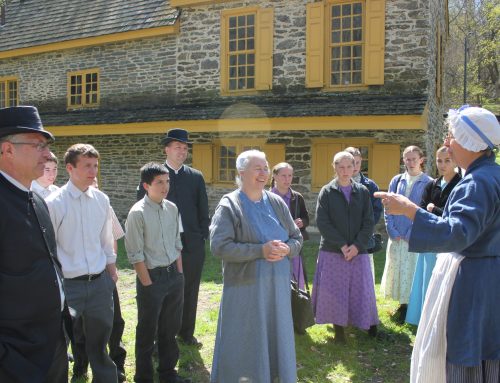This past Saturday Lincoln Drive was closed most of the day for road work. Our village was quiet with just the few visitors willing to navigate the traffic jam that such a closure causes in the neighborhood. Living and working in the village, I don’t hear the constant traffic noise. Instead, I hear the silence. Although the Rittenhouse family did not have to contend with the automobiles and sirens that are the soundtrack of our modern lives, the village was far from silent. To those who lived and worked at RittenhouseTown the sights and sounds of a working mill were the stuff of everyday life. The rush of water, the hum of the water wheel and the clatter of the hooves of horses echoed through the narrow valley cut by the rapidly moving Paper Mill Run. Wagons from nearby Germantown brought linen rags to be made into paper and carried away finished reams destined for the local printer. The smell of pulp permeated the air. This photograph is the only known image of the ca. 1702 Rittenhouse Paper Mill. Thirty by 39 feet, it occupied a prominent position in the heart of the village and continuously produced paper until about 1825. Fairmount Park demolished the Mill in 1891 just about a year after this photograph was taken. It is difficult to imagine why our mill and several large stone barns in the village were not considered worth saving but the 19th century was a very different time. With a focus on creating a park like setting for Philadelphia residents and eliminating sources of Schuykill River pollution, our village and its centuries old buildings had no useful place in the Park’s plan. We are grateful to have the six Rittenhouse structures that survive and take seriously our task as stewards o
